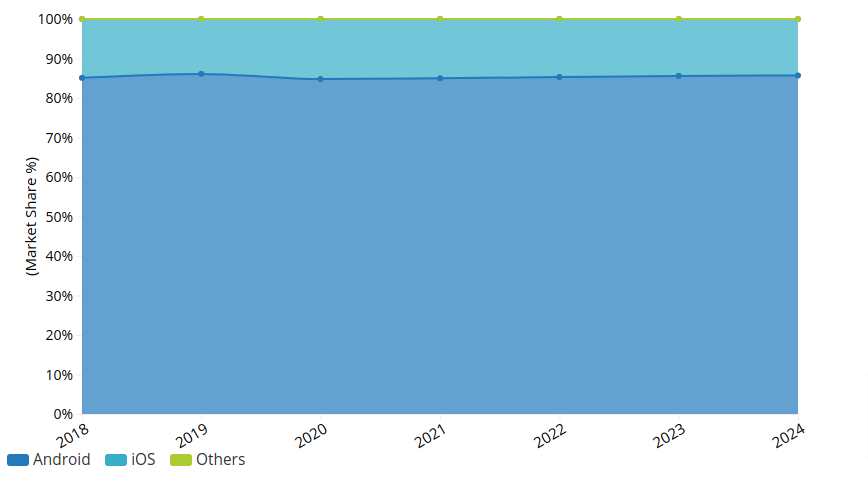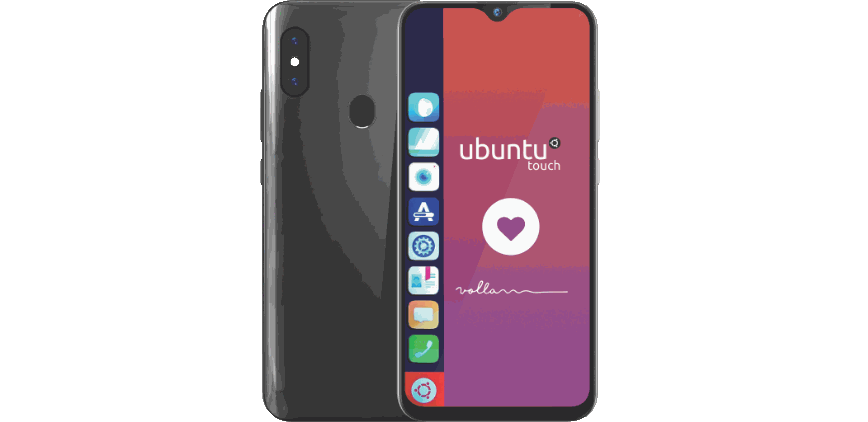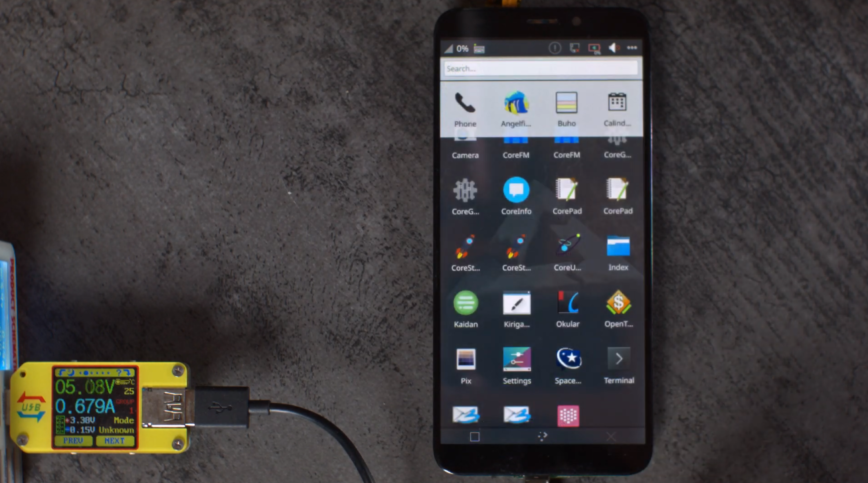- These are the most exciting Linux powered devices
- 85% of all Smartphones are powered by Linux
- Android smartphones are powered by Linux.
- Linux kernel runs on 85% of all Smartphones.
- Additional Linux based smartphones
- Ubuntu Touch for smartphones and tablets.
- Librem 5 – Security and Privacy focused Linux OS smartphone.
- Pinephone – runs mainline Linux-based mobile operating systems.
- F(x)tec Pro ¹ Linux smartphone – full physical slide-out QWERTY keyboard.
- Plasma Mobile – from the creators of KDE Plasma Linux desktop.
- Linux kernel on your Android
- Conclusion
These are the most exciting Linux powered devices
What started off as a hobby project for the Finnish engineer Linus Torvalds, has turned into a global phenomenon. Today Linux is literally powering the modern economy – everything from Amazon public clouds, stock exchanges, and social networks run on Linux. It also runs in devices like sensors, printers, routers…and what not. Linux virtually owns the smartphone market with Android.
Here is a sneak peek at some of the most interesting devices powered by Linux.
Chromebook: Chromebooks run on Chrome OS, a Linux-based operating system developed by Google. Chromebooks are the closest Linux can get to the traditional desktop market. Chromebooks continue to gain popularity, in fact, Chromebooks outsold MacBooks in the US last year.
What sets ChromeOS apart from other platforms is that it deploys a unique mechanism for software updates that keeps the devices up-to-date all the time, without any user intervention. As a result they are extremely secure and maintenance free. With the arrival of Android applications on Chrome OS, Chromebooks are going to become even more appealing to a wide range of users.
Chromecast: Chromecast is a small, $35 device that turns any HDMI-enabled TV into a smart TV. Chromecast support is baked into many services like Netflix, YouTube, Amazon Prime… that allows for streaming of content from any smartphone or tablet to the Chromecast devices. Now, there is an audio-only version of Chromecast that turns any speaker into smart speaker, allowing users to stream music to these devices from music services like Google Play Music, Pandora, Spotify, YouTube music and many more. Chromecast, as usual, runs on Linux.
Smart TVs: If you are buying a new TV from a reputed brand, the chances are it’s a smart TV. Virtually all smart TVs are powered by some Linux-based operating system. Samsung TVs use Tizen OS, Amazon is selling Fire OS based TVs, LG uses their own webOS and Sony sells Android based Smart TVs.
Smartwatches: Smartwatches from Samsung, Motorola, LG, ASUS, Huawei, Sony, etc. run on a Linux based operating system. Most watches run on Android Wear, except for Samsung that uses Tizen OS on Gear S smartwatches.
Nvidia Shield: Nvidia Shield is primarily a media streaming box for streaming movies, tv shows and music. It competes with Apple TV. However, it’s evolving beyond just a streaming box. Nvidia Shield is also doubles up as a powerful game console to play supported games from the Google Play Store. Nvidia is building a gaming service called GeForce NOW, where users can stream games online. Nvidia Shield also doubles up as full-fledged virtual assistant, powered by Google Assistant.
Drones: There are many commercial and consumer drones that run on Linux. Some of the Linux powered drones and drone platforms include Brainiac, BeBop, Solo, DroneKit, BeagleDrone, Paparazzi Project, Ground control, Panopticopter, Airware, APM Planner and more…
Drones are evolving beyond hobby and toys. They are now used in commercial and industrial applications to deliver goods, save lives, monitor and repair industrial instruments and much more. They are becoming IoT devices with wings. This evolution has created demand for mature operating systems for these devices.
Canonical has created a version of Ubuntu that runs on IoT devices. Companies like Erle-Copter, DJI and Qualcomm are using Ubuntu to create drones or add-on board for drones.
Tesla Cars: Yes, Tesla cars run on Linux. Tesla cars are like IoT on wheels and like most IoT devices they run on Linux. Tesla cars are powered by NVIDIA DRIVE PX 2 AI computing platform and run on Linux OS. Based on Elon Musk’s Tweet, Tesla cars are running version 4.4 of Linux OS.
Virtual Assistants: There are two major virtual assistants or smart speakers: Google Home and Amazon Echo, and both run on Linux. While Amazon Echo runs on Fire OS, a Linux based operating system developed by Amazon, Home runs on Linux-based Android.
These are some of the most exciting Linux powered devices, we will continue to update this list to add newer and even more exciting devices.
85% of all Smartphones are powered by Linux
Smartphones powered by Linux are, for a fact, dominating the smartphone market. A few of you may be scratching your heads at this point. Others are filled with “The Sound of Music” – “The Hills are Alive” kind of Linux pride!
Read on, and I’ll provide some pudding, filled with proof that 85% of all Smartphones are powered by Linux.
Very often, when I meet people outside of work, especially socially, they’ll ask: “what type of work do you do?”. When I respond with Linux Systems Analyst, many respond with “I don’t really like Linux because it can’t open or edit Microsoft Word files.”* or sometimes say: “You mean that OS that has all text and no GUI?”** or even “Linux, what’s that?”
As most of you reading this know, Google’s Android and Chrome OS are operating distributions both originally based on the Linux kernel.
Android smartphones are powered by Linux.
Android is an operating system based on the Linux kernel. Or, as Google’s developers put it, “Android is built on the open Linux Kernel” . As of Android 11, Android sits on a Long-Term-Support (LTS) Linux kernel. Namely, based on Linux kernel versions 4. 19, and 5.4.
To be more specific: “since 2019, the Linux mainline is now merged into the android-mainline whenever Linus Torvalds posts a release or release candidate. Before 2019, Android common kernels were constructed by cloning the recently declared LTS kernel and adding the Android-specific patches. This new model avoids the significant effort to forward port and test Android patches by accomplishing the same result incrementally.” – Source.
There’s an informative video (recorded with a potato) about Android’s architecture where Google explains that Android’s Linux kernel has further architectural changes outside the typical Linux kernel. There’s also a more recent and better quality video that answers the question: Is Android really just Linux? Google’s open-source chief, Chris DiBona, refers to Android as a “Linux desktop dream come true.”
Now that we’ve confirmed that Android smartphones are powered by Linux, let’s look at the dominating popularity of Linux-powered smartphones, namely Android. We will also look at some other up-and-coming Linux smartphones.
Linux kernel runs on 85% of all Smartphones.
A recent study done by IDC reveals that Android has fortified itself in the smartphone market. The study, released in November 2020, said that 261.1 million smartphones shipped during that quarter, and 85 percent were Androids.
According to Gartner and Statista, Android now boasts a global market share of 86 percent. Look at the graph below for more details on the smartphone market share by mainly the top two smartphone OS distributors, Andoird and Apple (iOS).
Additional Linux based smartphones
If you would like additional Linux smartphone options, have a look at the following Linux smartphones. Read on for details on the Ubuntu Touch, Librem 5, Pinephone, and the F(x)tec Pro1, to name a few.
Ubuntu Touch for smartphones and tablets.
Ubuntu Touch (previously Ubuntu Phone) is a mobile version of the Ubuntu operating system initially developed by Canonical Ltd. but is now being developed by the UBports community. It is designed primarily for touchscreen mobile devices such as smartphones and tablet computers. Ubuntu Touch is 100% community-driven and independent.
Also, check out this list, which shows currently supported smartphones in the Ubuntu Linux Touch ecosystem. There’s growing support for the Fairphone 3. Mature devices have easy access to installation through the UBports Installer. Devices in an early state generally need to follow a manual installation procedure. – ubuntu-touch.io
Librem 5 – Security and Privacy focused Linux OS smartphone.
Purism, known for making amazing Linux laptops focusing on privacy and free software, successfully ran a crowdfunding campaign for a brand new smartphone called Librem 5. They raised 1 million dollars more than the goal.
The Librem 5 smartphone focuses on security by design and privacy protection by default and is based on Debian Linux. Running Free Open-Source software and a GNU+Linux Operating System.
The Librem 5 phone will be the world’s first IP-native mobile handset, using end-to-end encrypted decentralized communication. – puri.sm/products/librem-5/
Pinephone – runs mainline Linux-based mobile operating systems.
The PinePhone is a smartphone developed by computer manufacturer Pine64 – the makers of the Pinebook Pro – intended to allow users to have complete control over their smartphone. Measures to ensure this are running mainline Linux-based mobile operating systems, assembling the phone with screws to simplify repairs and upgrades, and including six kill switches/security switches for its hardware, accessible by removing the back cover of the phone. – pine64.org/pinephone/
F(x)tec Pro ¹ Linux smartphone – full physical slide-out QWERTY keyboard.
The Pro1 is a touchscreen smartphone with a slide-out horizontal physical keyboard. This Linux smartphone is designed and manufactured by London-based smartphone brand F(x)tec. The Pro1 is an evolution from the early Moto Mod Livermorium keyboard. Currently, the Pro1 community has helped develop a clean Linux operating system, with Sailfish soon to come. – fxtec.com
Plasma Mobile – from the creators of KDE Plasma Linux desktop.
Plasma Mobile is a Plasma variant for smartphones. It is currently available for the Nexus 5 and Nexus 5X, supported devices on postmarketOS, and the PinePhone. Plasma Mobile runs on Wayland, and it is compatible with Ubuntu Touch applications. PinePhone – KDE Community Edition was made available as pre-orders on 1 December 2020. – plasma-mobile.org.
Linux kernel on your Android
You’ll get more access to Linux on a rooted device, but for the fun of it, let’s use the default Android OS and look at what version of the Linux Kernel your Android has installed. For most Android smartphones, you can view the Linux Kernel version on your Android smartphone by going to the “settings” > “about phone” section (you may have to tap on the Android version).
If you have a rooted Android, you can usually install “Termux,” then launch it and type the following command:
Which will output something like this from a OnePlus device:
Of course, you can do a bunch of cool stuff on a rooted Android with terminal access. For example, using top or htop you can use the command line to install packages, kill apps, launch services, and so on.
Conclusion
The Android army of smartphones continues to invade the smartphone market. Mainly because it’s open-source, allowing power-users and developers alike the freedom to explore, develop and break new ground like never before.
I’m hopeful to see these aforementioned Linux-based smartphone startups take a more significant stake in the smartphone market. Other notable Linux smartphones are NecunOS NE_1, Fenniy, Cosmo Communicator, and Volla Phone.
Lastly, I hope that more users will become aware of Linux and, as such, embrace its power and the community that comes with it. More power to users!
* Linux can indeed open and edit Word files, Excel spreadsheets, etc., on desktops, tablets, and smartphones.
** There are more GUI options available for Linux (example. Gnome, KDE, Xfce, etc., etc.) than any other operating system out there.







